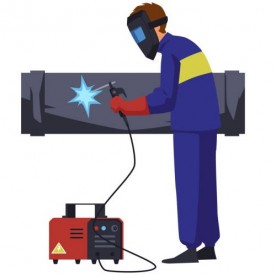- Home
- About Us
- Products
- Rohmann Eddy Current
- Secu-Chek UV-LED Lamps
- Sonatest
- MR Chemie
- NOVO DR
- Hoffmann Tam Panels
- Desoutter Industrial Tools
- Novotest
- Integrated Design Tools (IDT Vision)
- Dakota NDT
- DeFelsko Corporation
- Sonotec Ultrasonic Solutions
- Sonotec Ultrasonic Hand-Tools
- G.A.L. Gage Company
- Western Instruments Inc.
- Esders Gas Technology
- Yoancomposite
- Hinode Electric
- Services
- News
- Contact Us
 (65) 6878 0608  (65) 6878 0609 |

Overview
WELDING PROCEDURE SPECIFICATION (WPS) involve creating detailed documents that outline how a particular welding process should be performed. The WPS is essential for ensuring consistency, quality, and safety in welding operations, and it must meet the standards and requirements of relevant codes and regulations.
Key Elements of a WPS:
- Materials: Specifies the types and grades of base and filler metals to be used.
- Welding Process: Identifies the specific welding process to be used (e.g., SMAW, GMAW, FCAW).
- Welding Parameters: Lists essential parameters like voltage, current, travel speed, and interpass temperature.
- Joint Design: Describes the type of joint and its preparation.
- Welding Positions: Specifies the welding positions (e.g., flat, horizontal, vertical).
- Preheat and Post-Weld Heat Treatment (PWHT): Outlines any necessary preheat or PWHT procedures.
- Filler Metal: Specifies the type and size of filler metal to be used.
- Pass Sequence: Describes the order in which welding passes should be performed.
Benefits of Using a WPS:
-
Improved Weld Quality:By following a well-defined procedure, welders can consistently produce high-quality welds.
-
Reduced Rework:A clear WPS can help minimize errors and rework, leading to cost savings.
-
Enhanced Safety:Adhering to a WPS ensures that welding operations are conducted safely and in accordance with industry standards.
-
Simplified Training:WPSs can be used as a training tool to educate welders on proper welding procedures.
-
Legal Compliance:WPSs help ensure that welding operations meet the requirements of relevant codes and standards.
For other services, click here.



